Rail Replacement - Rear Section
Danger: Always perform the High Voltage Disabling procedure prior to servicing any High Voltage component or connection. Personal Protection Equipment (PPE) and proper procedures must be followed.
The High Voltage Disabling procedure will perform the following tasks:
| • | Identify how to disable high voltage. |
| • | Identify how to test for the presence of high voltage. |
| • | Identify condition under which high voltage is always present and personal protection equipment (PPE) and proper procedures must be followed. |
| • | Safety glasses with appropriate side shields when within 15 meters (50 feet) of the vehicle, either indoors or outdoors. |
| • | Certified and up-to-date Class "0" Insulation gloves rated at 1000V with leather protectors. |
| - | Visually and functionally inspect the gloves before use. |
| - | Wear the Insulation gloves with leather protectors at all times when working with the high voltage battery assembly, whether the system is energised or not. |
Removal Procedure
Warning : Refer to Approved Equipment for Collision Repair Warning in the Preface section.
- Disable the supplemental inflatable restraint (SIR) System. Refer to SIR Disabling and Enabling .
- Inspect the high voltage system. Refer to High Voltage System Inspection .
- Remove all related panels and components.
- Repair as much of the damage as possible to factory specifications. Refer to Dimensions - Body .
- Note the location and remove the sealers and anti-corrosion materials from the repair area, as necessary. Refer to Anti-Corrosion Treatment and Repair .
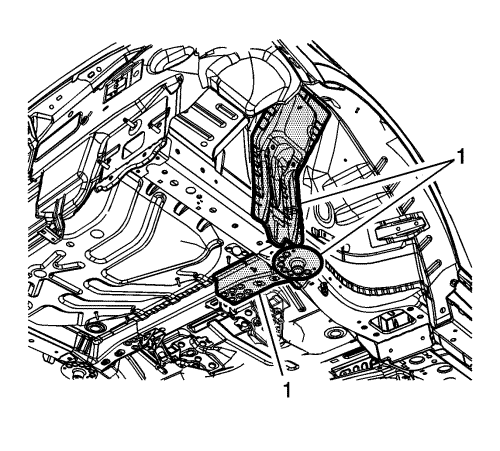
Note : To remove the rear rail-rear section, the rear spring seat, number five bar extension , and the rear suspension support bracket (1) will have to be removed to gain access to the rail spot welds.
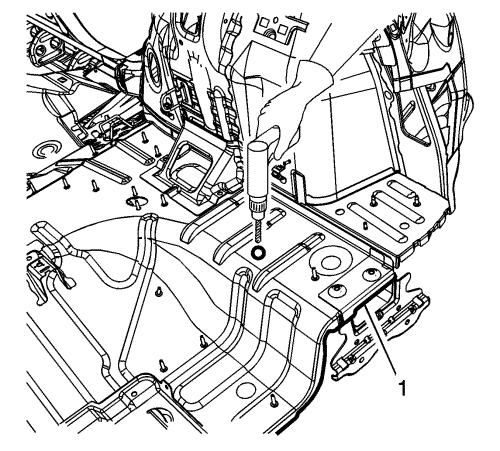
Note : Do not damage any inner panels or reinforcements. In areas where structural adhesive is present, heat the area to facilitate removing the components.
- Locate and drill out all factory welds (1). Note the number and location of the welds for installation of the rear rail - rear section.
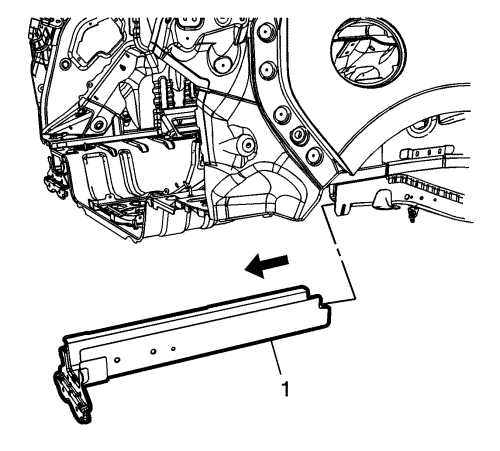
- Remove the damaged rear rail - rear section (1).
Installation Procedure
Note :
| • | If the location of the original plug weld holes cannot be determined, space the plug weld holes every 40 mm (1 ½ in) apart. |
| • | Some panels may have structural weld-thru adhesive. It is necessary to replace the weld-thru adhesive with an additional spot weld between each factory spot weld. |
- Prepare all mating surfaces as necessary.
- Apply GM-approved Weld-Thru Coating or equivalent to all mating surfaces. Refer to Anti-Corrosion Treatment and Repair .
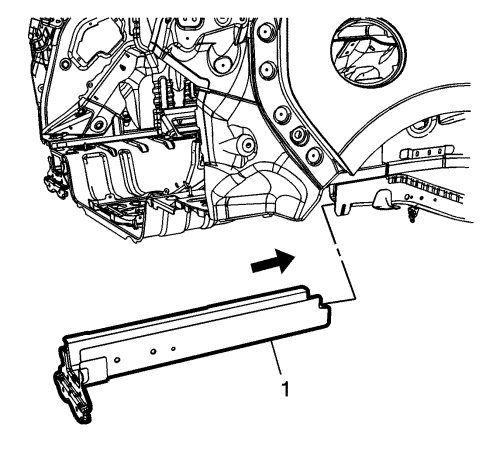
- Position the rear rail-rear section (1) to the vehicle using 3-dimensional measuring equipment. Clamp the rear rail lower into place.
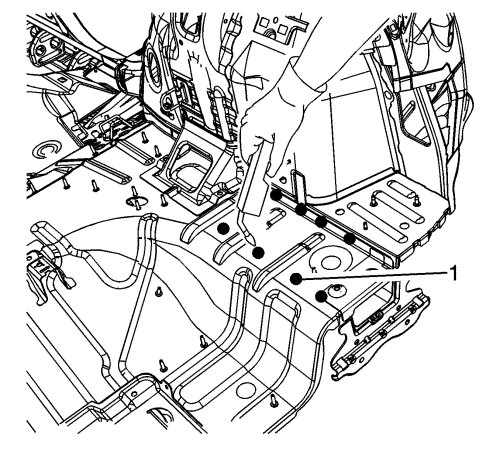
- Plug weld accordingly (1).
- Clean and prepare all welded surfaces.
- Apply the sealers and anti-corrosion materials to the repair area, as necessary. Refer to Anti-Corrosion Treatment and Repair .
- Paint the repair area. Refer to Basecoat/Clearcoat Paint Systems .
- Install all related panels and components.
- If disabled, enable the high voltage system. Refer to High Voltage Enabling .
- Enable the SIR system. Refer to SIR Disabling and Enabling .
| ©© Copyright Chevrolet. All rights reserved |




